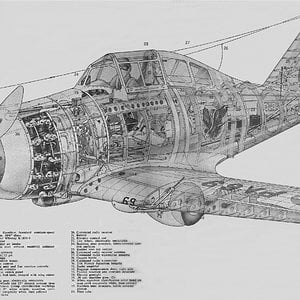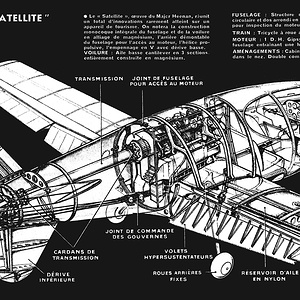Navigation
Install the app
How to install the app on iOS
Follow along with the video below to see how to install our site as a web app on your home screen.
Note: This feature may not be available in some browsers.
More options
You are using an out of date browser. It may not display this or other websites correctly.
You should upgrade or use an alternative browser.
You should upgrade or use an alternative browser.
Mission
The AGM-129A advanced cruise missile is a stealth, nuclear-capable cruise missile used exclusively by B-52H bombers.
Features
The AGM-129A is a subsonic, turbofan-powered, air-launched cruise missile. It is harder to detect, and has greater range and accuracy than the AGM-86 air-launched cruise missile. The ACM achieves maximum range through its highly efficient engine, aerodynamics and fuel loading. B-52H bombers can carry up to six AGM-129A missiles on each of two external pylons for a total of 12 per aircraft. When the threat is deep and heavily defended, the AGM-129 delivers the proven effectiveness of a cruise missile enhanced by stealth technology. Launched in quantities against enemy targets, the ACM's difficulty to detect, flight characteristics and range result in high probability that enemy targets will be eliminated.
The AGM-129A's external shape is optimized for low observables characteristics and includes forward swept wings and control surfaces, a flush air intake and a flat exhaust. These, combined with radar-absorbing material and several other features, result in a missile that is virtually impossible to detect on radar.
The AGM-129A offers improved flexibility in target selection over other cruise missiles. Missiles are guided using a combination of inertial navigation and terrain contour matching enhanced with highly accurate speed updates provided by a laser Doppler velocimeter. These, combined with small size, low-altitude flight capability and a highly efficient fuel control system, give the United States a lethal deterrent capability well into the 21st century.
Background
In 1982 the Air Force began studies for a new cruise missile with stealth characteristics after it became clear that the AGM-86B would soon be too easy to detect by future air defense systems. In 1983 General Dynamics was awarded a contract to develop the new AGM-129A ACM. The first test missile flew in 1985; the first missiles were delivered to the Air Force in mid-1990.
Plans called for an initial production of approximately 1,500 missiles. The end of the Cold War and subsequent budget cuts led the Air Force to cease production after 460 missiles, with the final delivery in 1993. Several corporate changes during production resulted in Raytheon Missile Systems as the final production firm.
General Characteristics
Primary Function: Air-to-ground strategic cruise missile
Contractor: Raytheon Missile Systems
Power Plant: Williams International Corp. F-112-WR-100 turbofan engine
Thrust: More than 700 pounds
Length: 20 feet, 10 inches
Weight: More than 3,500 pounds
Diameter: 29 inches
Wingspan: 10 feet, 2 inches
Range: More than 2,000 miles
Guidance System: Inertial navigation with terrain contour matching and laser Doppler velocimeter updates
Warhead: Nuclear capable
Date Deployed: 1990
Inventory: Active force, approximately 460
The AGM-129A advanced cruise missile is a stealth, nuclear-capable cruise missile used exclusively by B-52H bombers.
Features
The AGM-129A is a subsonic, turbofan-powered, air-launched cruise missile. It is harder to detect, and has greater range and accuracy than the AGM-86 air-launched cruise missile. The ACM achieves maximum range through its highly efficient engine, aerodynamics and fuel loading. B-52H bombers can carry up to six AGM-129A missiles on each of two external pylons for a total of 12 per aircraft. When the threat is deep and heavily defended, the AGM-129 delivers the proven effectiveness of a cruise missile enhanced by stealth technology. Launched in quantities against enemy targets, the ACM's difficulty to detect, flight characteristics and range result in high probability that enemy targets will be eliminated.
The AGM-129A's external shape is optimized for low observables characteristics and includes forward swept wings and control surfaces, a flush air intake and a flat exhaust. These, combined with radar-absorbing material and several other features, result in a missile that is virtually impossible to detect on radar.
The AGM-129A offers improved flexibility in target selection over other cruise missiles. Missiles are guided using a combination of inertial navigation and terrain contour matching enhanced with highly accurate speed updates provided by a laser Doppler velocimeter. These, combined with small size, low-altitude flight capability and a highly efficient fuel control system, give the United States a lethal deterrent capability well into the 21st century.
Background
In 1982 the Air Force began studies for a new cruise missile with stealth characteristics after it became clear that the AGM-86B would soon be too easy to detect by future air defense systems. In 1983 General Dynamics was awarded a contract to develop the new AGM-129A ACM. The first test missile flew in 1985; the first missiles were delivered to the Air Force in mid-1990.
Plans called for an initial production of approximately 1,500 missiles. The end of the Cold War and subsequent budget cuts led the Air Force to cease production after 460 missiles, with the final delivery in 1993. Several corporate changes during production resulted in Raytheon Missile Systems as the final production firm.
General Characteristics
Primary Function: Air-to-ground strategic cruise missile
Contractor: Raytheon Missile Systems
Power Plant: Williams International Corp. F-112-WR-100 turbofan engine
Thrust: More than 700 pounds
Length: 20 feet, 10 inches
Weight: More than 3,500 pounds
Diameter: 29 inches
Wingspan: 10 feet, 2 inches
Range: More than 2,000 miles
Guidance System: Inertial navigation with terrain contour matching and laser Doppler velocimeter updates
Warhead: Nuclear capable
Date Deployed: 1990
Inventory: Active force, approximately 460








